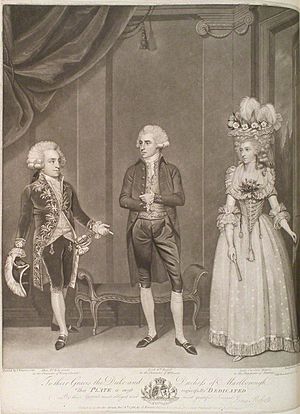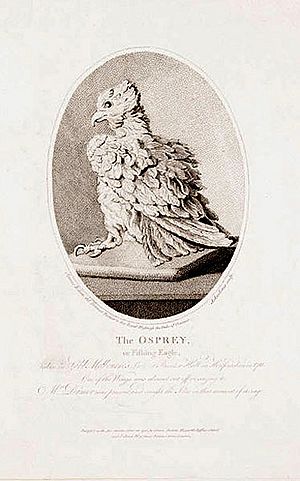James Roberts (painter) facts for kids

James Roberts (born 1753, died around 1809) was a talented painter who lived in England in the late 1700s. He was most famous for painting portraits of people. But he also painted beautiful landscapes and tiny, detailed pictures called miniatures.
Early Life and Art
James Roberts was the son of another artist, who was also named James Roberts. His father was a landscape engraver, meaning he made detailed pictures of natural scenes.
From 1773 to 1784, young James Roberts showed his paintings every year at the Royal Academy. This was a very important place where artists could display their best work.
Roberts also created many dramatic portraits for a book series called Bell's British Theatre. These books were put together by a publisher named John Bell. Between 1775 and 1781, Roberts made over 60 watercolour paintings on vellum (a special type of treated animal skin) for these books.
Time in Oxford
For a while, James Roberts worked in Oxford as a drawing teacher. Here, he was inspired by another artist named John Baptist Malchair. While in Oxford, Roberts painted a portrait of James Smithson. He made this painting for Smithson's graduation in 1786.
Around 1784 to 1795, Roberts drew pictures of sculptures made by Anne Seymour Damer. These drawings were meant to be turned into a series of printed pictures. However, only one set of these prints was ever published.
Roberts also painted Philip Hayes, who was a composer. He used both watercolours and pastels for these portraits. One very special painting was his portrait of John Hawkins. This was the only time Hawkins ever sat for a portrait. Hawkins' daughter, Laetitia Matilda Hawkins, thought her father only agreed because Hayes flattered him. She also felt the painting didn't really look like her father, and that the book shown in the painting was a novel, which was unusual for her serious father.

Roberts also worked as a scene painter at Blenheim Palace in 1788 and 1789. He designed the scenery for plays like The Maid of the Oaks and False Appearances in 1789. False Appearances was a play translated by Henry Seymour Conway.
Later Years and Legacy
By 1795, James Roberts had a special job as a portrait painter for the Duke of Clarence. The Duke later became King William IV.
Roberts continued to show his paintings at the Royal Academy every year from 1795 to 1799. Today, the National Portrait Gallery, London has 52 portraits by Roberts, or copies of his work. This shows how important his art was.


